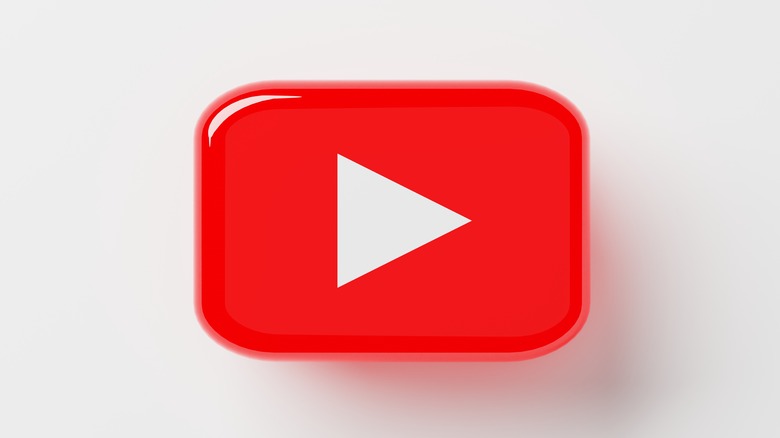YouTube Outages: Causes, Impact, and Global Reactions:
YouTube, the world’s largest video-sharing platform owned by Google, has become an essential part of modern digital life. Millions of people across the globe depend on YouTube daily for entertainment, education, news, and business promotion. However, when YouTube experiences an outage—whether partial or global—it often creates chaos among users. Outages affect not only viewers but also content creators, advertisers, and businesses that rely on the platform for revenue and communication. Understanding the causes, impact, and responses to these outages reveals how deeply YouTube is woven into today’s online ecosystem.

What Is a YouTube Outage?
A YouTube outage occurs when the platform becomes inaccessible or fails to perform specific functions properly. Users might face issues such as videos not loading, slow buffering, broken links, login failures, or complete website downtime. Outages can affect the website, mobile app, smart TVs, or embedded players on third-party websites. Sometimes, the outage is localized to certain regions, while in other instances, it can affect users worldwide.
YouTube outages can last anywhere from a few minutes to several hours, depending on the cause. Even short outages tend to trend immediately on social media platforms such as X (formerly Twitter) or Reddit, where users quickly start reporting “Is YouTube down?” along with screenshots or error messages.
Common Causes of YouTube Outages:
There are several technical and infrastructural reasons why YouTube may experience downtime. Some of the most common include:
Server Overload or Failure:
YouTube operates on massive data servers distributed globally. If a server cluster experiences overload or failure, the platform can temporarily become inaccessible in certain regions.
Read More: https://www.firstpost.com/explainers/what-caused-youtube-down-outage-13942486.html
Network Connectivity Issues:
Sometimes, the issue is not directly with YouTube’s infrastructure but rather with Internet Service Providers (ISPs) or backbone networks that connect users to Google’s servers. A break in one of these connections can cause YouTube to go offline temporarily.
Software Bugs or Glitches:
YouTube regularly updates its algorithms, design, and recommendation systems. Occasionally, a faulty update or a coding error can cause major disruptions, leading to video playback or upload issues.
Cyber Attacks and Security Threats:
Distributed Denial of Service (DDoS) attacks or targeted hacking attempts can overwhelm YouTube’s servers, leading to temporary outages. Although Google’s systems are among the most secure in the world, no digital platform is entirely immune to cyber threats.
Google Cloud or API Failures:
Since YouTube relies heavily on Google Cloud infrastructure, an issue with the Google Cloud Platform (GCP) can directly affect YouTube’s performance. API (Application Programming Interface) malfunctions can also cause third-party integrations to fail.
Maintenance and System Upgrades:
Occasionally, YouTube may experience planned maintenance or unplanned upgrades that disrupt its services temporarily. These outages are usually brief and communicated in advance, but sometimes unforeseen problems extend the downtime.
Impact of YouTube Outages:
The impact of a YouTube outage varies depending on its duration and scale, but the consequences can be widespread.

For Viewers:
Regular users depend on YouTube for entertainment, education, music, and news. When the site goes down, frustration builds quickly, especially among those who rely on YouTube for live events or study material.
For Content Creators:
YouTube outages are particularly damaging for creators who depend on the platform for income. Monetized creators lose ad revenue during downtimes since their videos cannot generate views or engagement.
For Businesses and Advertisers:
Many businesses use YouTube for marketing campaigns and advertisements. During an outage, active ad campaigns may stop running, disrupting marketing analytics and reducing visibility.
For Educators and Students:
In today’s digital learning environment, YouTube serves as an educational hub for tutorials, lectures, and learning resources. When outages occur, they can interrupt lessons, especially in virtual classrooms that depend on YouTube content.
For Global Communication:
YouTube also serves as a communication channel for news and emergency updates. In critical moments, such as natural disasters or political events, an outage can limit information dissemination and delay updates.
Major YouTube Outages in History:
Over the years, YouTube has faced several notable outages:
November 2018: YouTube experienced one of its largest global outages that lasted for over an hour. Millions of users across the U.S., Europe, and Asia reported complete service failure.
October 2020: A global YouTube outage affected both the website and mobile app, leaving users unable to stream videos for nearly two hours.
April 2022: A partial outage affected video loading and comment sections, with many users reporting playback errors worldwide.
December 2023: Some users experienced login and upload failures due to backend maintenance, which disrupted the platform for several hours.
How YouTube Handles Outages:
When YouTube experiences technical problems, its engineering and communications teams respond rapidly. Typically, the first acknowledgment comes through Google’s official social media handles or the YouTube Team account on X. Users are advised to check the Google Workspace Status Dashboard or websites like Downdetector, which track real-time reports from users.
Engineers then identify the source of the issue—whether it is server overload, network errors, or software bugs—and deploy fixes.
User Reactions and Internet Culture:
Whenever YouTube goes down, the internet reacts instantly. Hashtags like #YouTubeDown or #YouTubeCrashed start trending within minutes. Memes, jokes, and screenshots flood social media platforms as users share their experiences. Interestingly, these reactions have become a part of online culture, showing how deeply users rely on YouTube in daily life.
Preventing Future Outages:
Google invests heavily in infrastructure to prevent outages. The company continually upgrades data centers, strengthens cybersecurity measures, and improves traffic distribution through Content Delivery Networks (CDNs). AI-powered monitoring tools are used to detect unusual traffic spikes or failures in real time, allowing faster recovery.
Conclusion:
YouTube outages remind us of the power and fragility of modern technology. While the platform provides endless entertainment and information, it also highlights our growing dependence on digital services. Each outage sparks frustration but also reflection—on how interconnected and reliant the global community has become. As technology continues to evolve, both YouTube and its users must adapt to these occasional disruptions, trusting that innovation and better infrastructure will minimize such events in the future.

